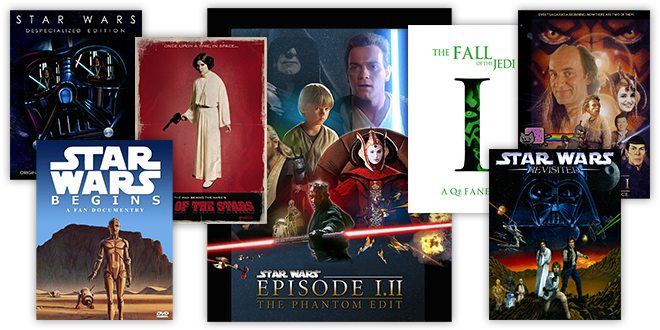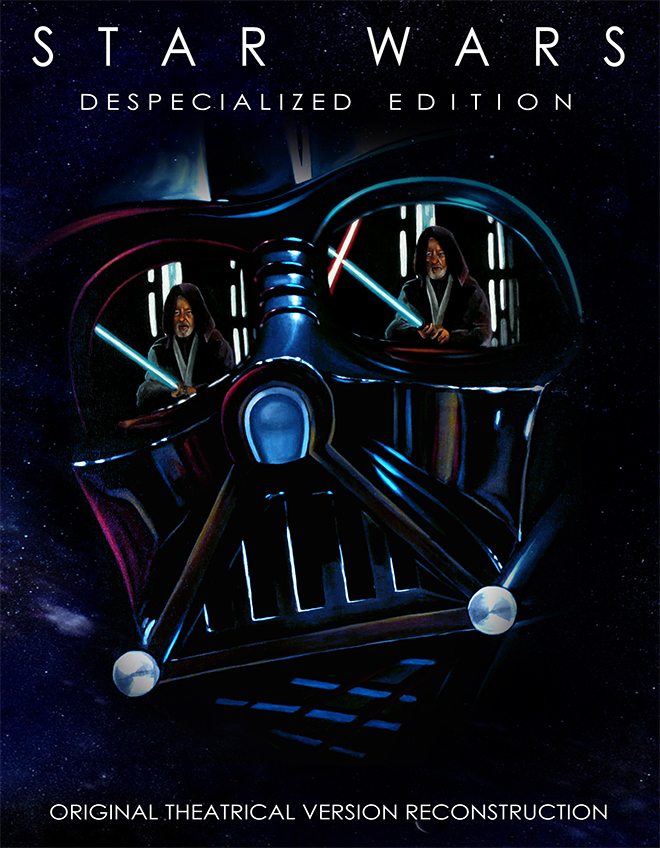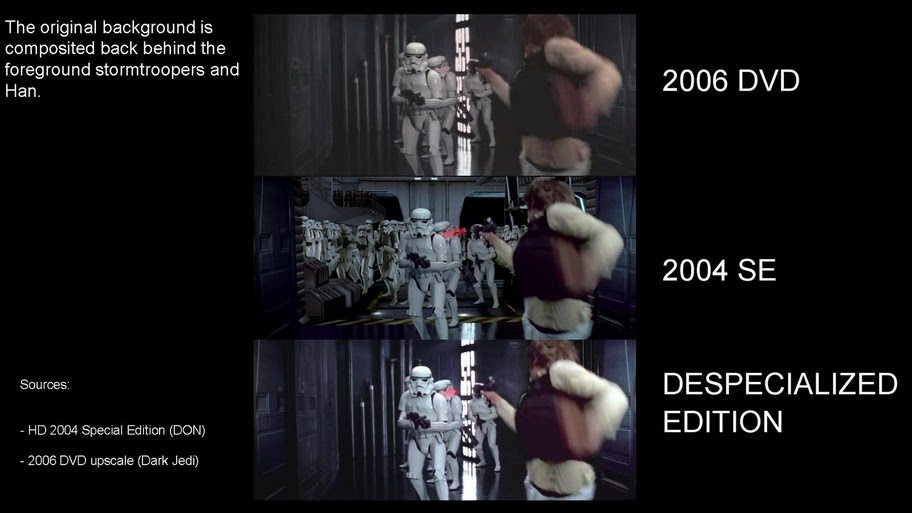
I’m trying hard to resist opening this post with the clichéd original Star Wars (Episode IV: A New Hope) version of once upon a time, but as May The Fourth is nearly upon us, I’m sure you all know what I mean. Let’s just take it as read and move on. Back then a film was “finished” then released, shown to audiences and that was that. With cinematic success and the rise of the home video market, certain directors saw fit to tinker with their creations before re-releasing them, adding a subtitle here, tweaking an edit there. Some of these changes make sense, while others certainly didn’t. From there, we move into the realms of the “Director’s Cut” – an auteur returning to his magnum opus and doing it his own way, perhaps after having changes forced upon him by the studio (see Blade Runner).
Then we have George Lucas.
When the Special Editions were first announced, the whole world was excited by the idea that we’d get to see our favorite films on the big screen again, and also to bring the experience to a new generation. Indeed the tagline for them was, “See it again, for the first time.” I was even a bit excited about what they’d do with all this newfangled CGI technology. What we weren’t expecting of course was for Mr. Lucas to tinker so much with the story, and in the process completely change one of the main characters. I refer to, of course, the fact that Han didn’t shoot first – he was the only one to shoot because Greedo was dead, face down on the cantina table! There were so many silly decisions made across all three Special Editions and they’re well documented all over the web, so there’s no need to go into them here, but they still did well enough at the box office and paved the way for the prequel trilogy.
With the release of The Phantom Menace in ’99, it would seem that Lucas learned his lesson – namely that Star Wars fans will still pay money to see a film even if it is a bit rubbish – and he never looked back. With each new release, he tinkered more and more with his films, sometimes trying to appease the fans by releasing the originals like they’d asked for (except they actually weren’t what we’d asked for), but mostly slowly chipping away at the fond memories we have from our youth. (Nooooooo, what the hell is the ghost of Hayden Christensen doing here?)
The rise of the internet gave us plenty of ways to vent our anger and frustration at all this, but also the means by which to do something about it. Just after Episode I was released into the home market, a fan going by the name of “The Phantom Editor” (later revealed to be Mike J. Nichols) took matters into his own hands, and, grabbing a VHS copy of the film re-edited the movie to concentrate “on creating the storytelling style that Lucas originally made famous.” It certainly wasn’t the first of what became know as “Fanedits,” but it was the first one to gain widespread media attention and brought the concept of Fanediting to the mainstream.

Subtitled The Phantom Edit, the original VHS edit circulated around Hollywood and garnered praise from the likes of Kevin Smith (who at one time was rumored to be The Phantom Editor himself) and even a kind of off-hand approval from Lucasfilm themselves. Nichols cut around 18 minutes from the film, mostly consisting of the juvenile humor of Jar-Jar Binks, the chatter of Battle Droids and young Anakin’s more childish moments. He also trimmed superfluous story elements (for example the detour through “the planet core”), reduced the amount of politics (which no-one really cared about) and removed the introduction of midichlorians (which everyone thought was a stupid idea). Later on, an updated (and further improved) version was released via the internet with a fascinating commentary track where Nichols explains his reasoning and motives, including why Jar-Jar is just not obliterated from the entire film. He is needed in the same way that the Ewoks are need in Jedi, for the big battle at the finale, but what has been masterfully removed are his scene-stealing antics – the dive into the lake, the long-tongue fruit grabbing, etc. – that can often take away the emotional aspect of a scene.
The Phantom Edit opened up the floodgates and Lucasfilm’s “leave them to it” attitude encouraged other faneditors to fire up their computers and get cutting. Currently on the Internet Fanedit Database, Fanedit.org, alone there are a total of 89 different versions of the six Star Wars. Each editor brings their own ideas to the table, and sometimes they see a bit that someone else has done, borrow it, and add a bit more – but always crediting the original source or inspiration. Some of them take the movies in completely different directions, others try to bring them back to the films we all grew up on, still more offer a look behind the scenes of the filming process. Even the celebs are getting in on it with actor Topher Grace’s 85-minute condensed version of all three prequels – but he won’t let anyone but his friends see it!
So what better way is there to spend Star Wars Day this year than by watching some of our favorite fanedits?
For the purist:
Star Wars – Despecialized Edition HD by Harmy

After all of Lucas’ tinkering, this version is an absolute joy to watch. It is as close as you can get to the original 1977 theatrical release – in the opening crawl there’s not even a mention of it being ‘Episode IV’. The original scenes have been painstakingly restored and color-corrected shot by shot based on a fade-free 1977 I.B. Technicolor Print.
Gone are the CGI additions from the special edition. No dewbacks, no shot from Greedo, no Jabba for Han to walk over, no more battalion of troopers around that corner, and the simple, practical effect, exploding Death Star. The best part about it all is that is all in glorious HD too, as the majority of the source material is from the Blu-ray edition, with additional sections upscaled from the 2006 DVD bonus disc and even from TV broadcasts. There are also standard definition despecialized version of Empire and Jedi, with HD “coming soon” apparently.

